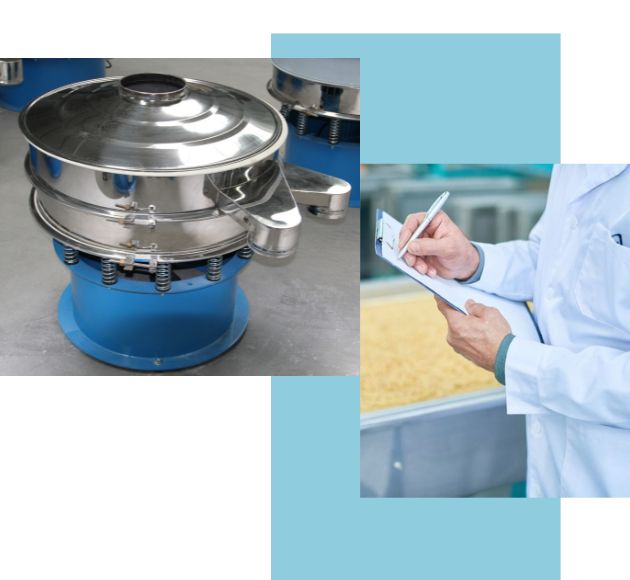Introduction
The fertilizer industry plays a critical role in global agriculture, providing essential nutrients that enhance crop yields and ensure food security. With the demand for high-quality fertilizers rising, efficient processing technologies have become more important than ever. One of the most vital components in fertilizer manufacturing is particle size control, which directly influences product performance and market value. Vibrating screens have emerged as indispensable tools in fertilizer plants, ensuring consistent granule quality, reducing impurities, and optimizing production efficiency. This article explores the applications, benefits, and innovations of vibrating screens in the fertilizer industry.
The Importance of Particle Size in Fertilizer Production
- Nutrient Availability – Granule size affects how nutrients dissolve and are absorbed by crops.
- Uniform Application – Even particle size ensures smooth distribution in mechanical spreaders.
- Product Stability – Properly sized granules resist caking and degradation during storage.
- Market Standards – Fertilizers must meet strict size specifications to be competitive in global markets.
Inconsistent granule sizes or impurities can lead to uneven crop nutrition, operational inefficiencies, and higher production costs. Vibrating screens address these challenges by classifying and refining fertilizer particles throughout the production process.

Applications of Vibrating Screens in Fertilizer Manufacturing
Granule Classification
Screens separate fertilizer granules into fine, medium, and oversized fractions. Oversized material is returned for crushing, while fines are reprocessed.
Dust and Impurity Removal
Screens effectively remove dust, foreign particles, and lumps, ensuring that only clean and uniform granules reach packaging.
Urea and Ammonium Nitrate Screening
Specialized screens handle highly crystalline and sometimes hygroscopic fertilizers, preventing blockages and ensuring accurate sizing.
Compound and Blended Fertilizers
Multi-deck screens classify multiple fertilizer components, ensuring precise mixing ratios.
Coating and Polishing Stages
Before fertilizers are coated for dust control or slow-release applications, vibrating screens ensure uniform granule size for optimal coating adhesion.
Benefits of Vibrating Screens in Fertilizer Processing
- Consistent Quality – Accurate size control improves fertilizer effectiveness and customer satisfaction.
- Reduced Waste – Recycling oversized and undersized material lowers raw material losses.
- Higher Throughput – Vibrating screens handle large volumes efficiently, supporting mass production.
- Improved Safety – Automated screening reduces dust exposure and manual handling risks.
- Cost Savings – Efficient classification reduces downtime and maximizes raw material utilization.
- Regulatory Compliance – Screens help meet international standards for fertilizer quality.

Key Features for Fertilizer Vibrating Screens
- Corrosion-Resistant Construction: Fertilizer processing often involves corrosive materials; stainless steel screens extend lifespan.
- Anti-Blinding Technology: Prevents clogging when screening hygroscopic fertilizers like ammonium nitrate.
- High Capacity Design: Suitable for plants producing thousands of tons per day.
- Multi-Deck Configuration: Enables multiple size separations in a single pass.
- Dust Control Systems: Enclosures and extraction systems minimize airborne particles.
Technological Innovations
- Ultrasonic Vibrating Screens – Reduce blinding when processing fine or sticky fertilizers.
- Smart Monitoring Systems – IoT-enabled sensors track screen performance and predict maintenance needs.
- Energy-Efficient Drives – Lower power consumption while maintaining high throughput.
- Integrated Production Lines – Vibrating screens work seamlessly with granulators, dryers, and coating drums.
Case Study: Urea Fertilizer Plant in Asia
A large-scale fertilizer plant in Asia integrated multi-deck vibrating screens into its urea granulation line. The system efficiently classified granules, recycling fines and oversize material back into the production cycle. This resulted in a 20% increase in product uniformity, reduced customer complaints, and improved fertilizer spreadability. Additionally, the plant achieved lower dust emissions, improving worker safety and compliance with environmental regulations.

Future Outlook: Vibrating Screens and Sustainable Agriculture
As global agriculture moves toward sustainability, fertilizer manufacturers must prioritize both efficiency and environmental responsibility. Vibrating screens will play a larger role in:
- Supporting precision agriculture with uniform fertilizers.
- Enabling production of eco-friendly slow-release and coated fertilizers.
- Reducing waste and improving raw material utilization.
- Ensuring compliance with stricter environmental and safety standards.
Conclusion
In the fertilizer industry, product quality and consistency are essential to supporting agricultural productivity. Vibrating screens provide the precision, efficiency, and reliability needed to meet these demands. From classifying urea granules to polishing complex fertilizers, vibrating screens optimize production processes while reducing waste and operational costs. For fertilizer manufacturers, investing in advanced vibrating screen technology means not only improving profitability but also supporting global food security and sustainable farming practices.
